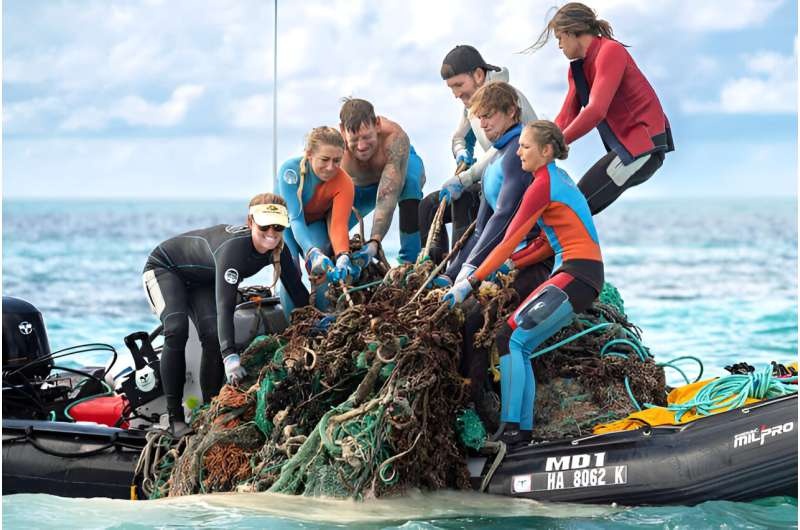A study reveals that 25 years of large-scale marine debris removal efforts in the Northwestern Hawaiian Islands have significantly benefited endangered Hawaiian monk seals and the broader marine ecosystem.

Reversing the Damage
For over 40 years, scientists at the NOAA Fisheries Pacific Islands Fisheries Science Center (PIFSC) have been monitoring and researching the harmful effects of marine debris on mammals, turtles, fish, and coral. This is how they know for a fact that otherwise abandoned, lost, and discarded fishing gear can get to and entangle and harm these vulnerable species.
In addressing the mounting concern, a group of researchers launched extensive multidecadal, multiagency, and multipartner marine debris removal operations throughout the Northwestern Hawaiian Islands (NWHI). Their goal was to reduce the impact of plastic marine debris and to preserve Hawaii’s delicate marine ecosystem, particularly the endangered Hawaiian monk seal.
Saving Seal Lives
To investigate the matter, researchers analyzed more than 40 years of entanglement records for Hawaiian monk seals before and after extensive debris removal took place. This accounts for the fact that, in areas with a high amount of effort expended on debris removal, their analysis showed the incidence of entanglements was far lower.
“Thanks to the hard work and dedication of many contributing people and organizations we can now say that all their efforts paid off, in decreased monk seal entanglement at least, saving seals lives while they improved nearshore habitats benefitting everything else,” said Jason Baker, a marine biologist with the NOAA PIFSC Protected Species Division and lead author on the study.
Study co-author Mary J. Donohue is an affiliate faculty member with the University of Hawaiʻi Sea Grant College Program who has dedicated her career to researching plastic pollution and its impacts on marine mammals and coral reefs. This is proof that at least some of the ocean can be cleaned up, and by association, other submerged plastics “have a solid possibility of being removed too,” she said in a statement, according to CNBC.
Conclusion
The results of this study illustrate that large amounts of ALDFG can be removed form marine ecosystems on a large scale and in the long term to the positive benefit, serving as evidence for efficacy. The restoration has the potential to be game-changing for these critical endangered species and the overall ecological health of this extraordinary place. Although there is still a long way to go in solving the root of plastic waste problems, this study provides some optimism that we can actually clean and recover large parts of the ocean.
